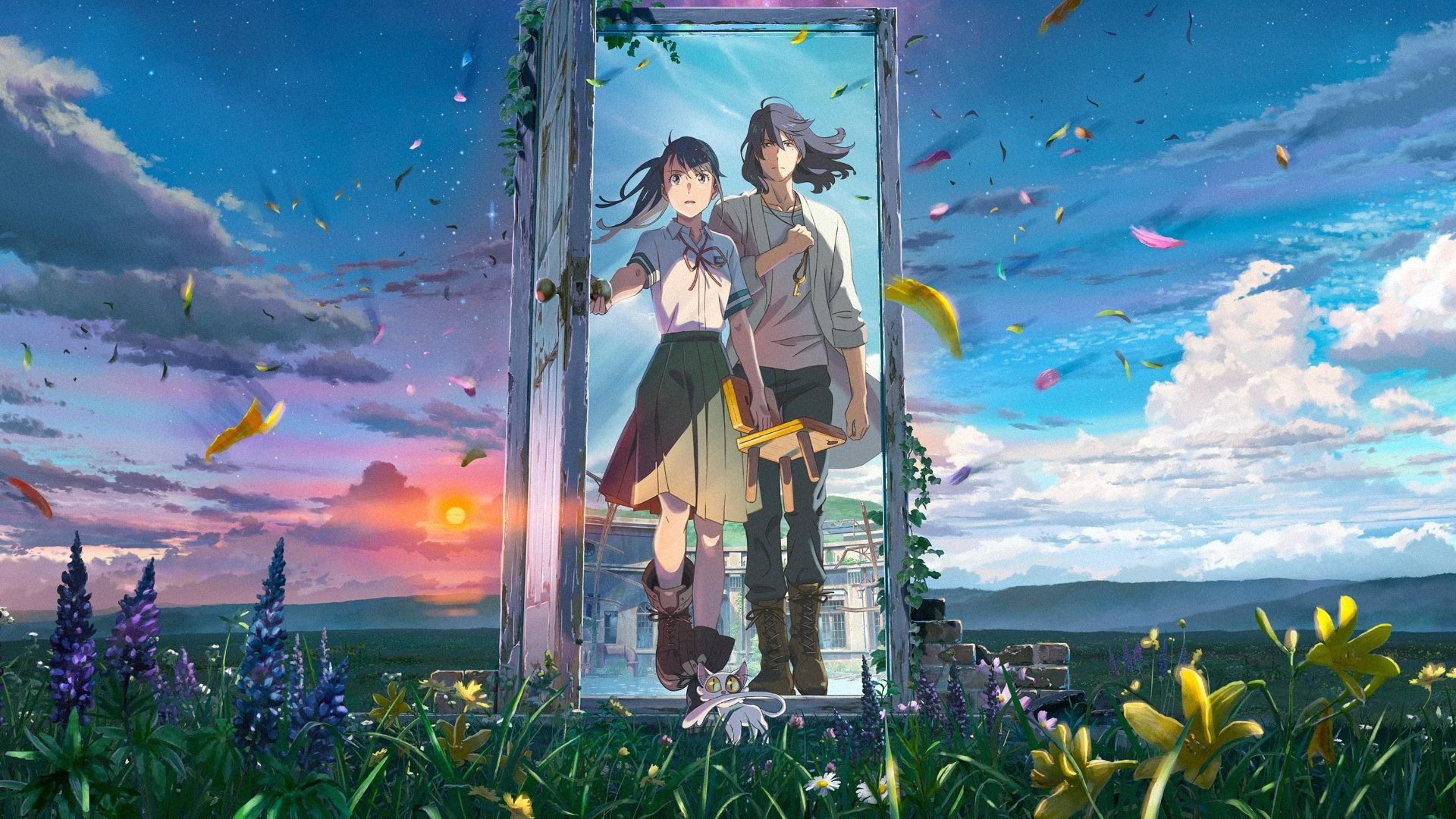A review of Suzume no Tojimari
Director: Makoto Shinkai
Screenplay: Makoto Shinkai
Music: RADWIMPS, Kazuma Jinnouchi
Director: Makoto Shinkai
Character Design: Masayoshi Tanaka
Art Director: Takumi Tanji
Animation Director: Kenichi Tsuchiya
Producer: Kouichirou Itou, Genki Kawamura
Licensed by: Crunchyroll
Awards won:
- Ryuu Masayuki for best music – Japan Academy Prize
Nominations:
- The Golden Bear Award for participation in the main contest – Berlinale
- Ryuu Masayuki for best animated film – Japan Academy Prize
In a small, peaceful town on Japan’s southern island of Kyushu, 17-year-old Suzume has lived with her aunt ever since she lost her mother as a little girl. One day on her way to school, she meets a mysterious1 young man named Souta, who is in search of a door. She follows him into the mountains and finds a dilapidated2 old door standing alone among ruins. On impulse, Suzume turns the handle, and at once sets free all the calamities3 the portal was meant to contain. All around Japan other doors open, threatening the population unaware4 of the looming danger. Together, Suzume and Souta set out on a journey to close them all again.
One can be sure that Shinkai will strive5 to improve the visuals with each successive film. It’s what made people notice his work in the first place, and he still has a knack for intricate, detailed landscapes and impressive effects. The characters are quite abstract in comparison, but this makes all their movements more refined. A great example is the little chair, which turns into a full-fledged6 supporting character. Although there isn’t much to do here, Shinkai managed to add a lot of life to this inanimate7 object. This is no easy feat8. Suzume is undoubtedly one of Shinkai’s best visually realized films, although it lacks the element of surprise that distinguished his earlier works. The soundtrack is very solid, with some interesting choices along the way, but it lacks cohesion and feels more like a collection of different influences than a standalone work. Traces of Ghost in the Shell / Kenji Kawai can be found here, emphasizing the mysteriousness of the fantasy elements, while the jazzy soundtrack under the action scenes reminded me more of the film Lupin III. The music itself is very good and adds character to the scenes, but the fact that it is too reminiscent9 of other films makes it difficult for Suzume to find its own unique identity.
Suzume teaches its viewers the value of life – that even the flimsiest things mean as much as the consequential ones. The film helps people understand how crucial it is to value each moment that passes down one’s life because no matter how insignificant10 it might seem, it makes life worth living.
WORDBANK:
1 mysterious – tajemniczy
2 dilapidated – zniszczony
3 calamities – klęski
4 unaware – nieświadomy
5 strive – starać się
6 full-fledged – w pełni rozwinięty, dojrzały
7 inanimate – nieożywiony
8 no easy feat – nie lada wyczyn
9 reminiscent – przypominający
10 insignificant – nieistotny
2022/2023 © Dominika Lange, II rok, Bezpieczeństwo wewnętrzne, Akademia Nauk Stosowanych w Koninie
Photo taken from Source 1
